Optimizing Satellite-Based Precipitation Estimation for Nowcasting of Rainfall and Flash Flood Events over the South African Domain
Abstract
:1. Introduction
- A combination of data sets with gauge data—these data sets are the products of input data from more than one sensor type, including satellites and rain gauges.
- Satellite combination data sets—these data sets use input from several different satellite sensor types.
- Single source data sets—these data sets are produced by using input from a single satellite sensor type.
2. Precipitation Estimation, Flash Flood Guidance and Precipitation Validation over Southern Africa
2.1. Precipitation Estimation
2.2. Flash Flood Guidance
2.3. Seasonal Trends in Precipitation over South Africa
2.4. Precipitation Validation over South Africa
2.5. Goal of This Paper
3. Data and Methodology
3.1. Domain of Interest and Available Observation Data
3.2. Short-Comings and Improvements to Previous Methodology
- (a)
- The initial data set only focused on two years (2008 and 2009) for which the required data were available for the calculation of the biases.
- (b)
- An area average of the biases was calculated over the entire country, using a 0.5° × 0.5° grid box resolution.
- (c)
- For both rainfall fields, the area average bias corrections indicated that the HE and UMS always overestimate and thus the intensity of rainfall was always diminished in the combined product. However, applying an area average bias correction ignores the fact that the HE and the UMS fields overestimate in some regions and/or times of the year and underestimates in other regions and/or times of the year.
- (d)
- The data was divided into two 6-month seasons, November to April was treated as “summer” and May to October was treated as “winter” and the same bias correction was applied for the entire area for these two seasons.
- (a)
- Five years of data (2008 to 2012) from the HE, the UMS and rain gauges were processed in order to establish whether a new, more realistic approach to an optimal satellite-based precipitation field, in combination with the NWP rainfall field, could be obtained.
- (b)
- The calculations were done on a monthly basis, instead of “seasonal”—in other words the monthly totals of rainfall from the different sources were compared to one another for the five year period. For the bias ratio of the HE, the total HE for each month was simply divided by the rainfall as measured by the rain gauges in that month for each grid box. A positive (negative) bias ratio indicated that the HE overestimated (underestimated) the rainfall. More detail on this methodology can be found in de Coning and Poolman (2011).Similar to the methodology followed in [21], a proxy stratiform rain gauge rainfall quantity was calculated by using the ratio of the stratiform rainfall to the total rainfall field of the UM and applying the ratio to the rainfall amount from the rain gauges. The bias ratio of the UMS for each month was thus calculated by dividing the UMS by the proxy-stratiform quantity of the rain gauges in each grid box. A positive (negative) bias ratio indicates that the UMS overestimated (underestimated) the rainfall.
- (c)
- The resolution was improved to 0.25° × 0.25° grid boxes (similar to the IPWG validation methodology) for all calculations. This would imply that spatial variations in the bias patterns (over- and under-estimations) could be taken into account.
4. Results and Discussion
4.1. Bias Ratios for the Different Months
4.2. Combination of the HE and UMS Fields
- If the bias ratio was in the range of 0.125 and 8, the bias correction was applied to the rainfall amount of the HE or UMS fields, respectively.
- If the bias correction was less than 0.125 or more than 8, then four surrounding grid boxes were used to calculate an average of the bias ratio, if this average bias ratio was within the 0.125 to 8 range, the four-grid-boxes-average bias ratio was applied to the respective HE or UMS rainfall amounts.
- If neither of the two previous calculations were within the 0.125 to 8 range, no bias correction was applied to the HE or UMS and the original rainfall value was kept unchanged.
4.3. Comparing the Old Combination Methodology to the Proposed New Combination Methodology
4.3.1. Results for Each Month, Using Five Cases per Month
4.3.2. Results for Individual Days
Case 1: 28 January 2010
Case 2: 10 May 2010
Case 3: 12 June 2010
Case 4: 13 June 2010
Case 5: 29 November 2010
4.3.3. Summary of Results
5. Conclusions
Acknowledgments
Conflicts of Interest
References and Notes
- Huffman, G.J.; Adler, R.F.; Arkin, P.; Chang, A.; Ferraro, R.; Gruber, A.; Janowiak, J.; McNab, A.; Rudolf, B.; Schneider, U. The Global Precipitation Climatology Project (GPCP) combined precipitation dataset. Bull. Amer. Meteorol. Soc 1997, 78. [Google Scholar]
- Kidd, C.; Bauer, P.; Turk, J.; Huffman, G.J.; Joyce, R.; Hsu, K.-L.; Braithwaite, D. Intercomparison of high-resolution precipitation products over northwest Europe. J. Hydrometeorol 2012, 13, 67–83. [Google Scholar]
- NOAA STAR—Centre for Satellite Applications and Research. Available online: http://www.star.nesdis.noaa.gov/smcd/emb/ff/index.php (accessed on 22 July 2013).
- De Coning, E. Satellite Applications for Very Short Range Weather Forecasting Systems in Southern African Developing Countries. In Recent Advances in Satellite Research and Development, 1st ed; Gardiner, S., Olsen, K.P., Eds.; Nova Science Publishers, Inc: Hauppauge, NY, USA, 2013; pp. 67–92. [Google Scholar]
- IPWG Data sets. Available online: http://www.isac.cnr.it/~ipwg/data/datasets.html (accessed on 22 July 2013).
- EUMETSAT Current Satellites. Available online: http://www.eumetsat.int/website/home/Satellites/CurrentSatellites/Meteosat/index.html (accessed on 22 July 2013).
- EUMETSAT Satellite Application Facilities. Available online: http://www.eumetsat.int/website/home/Satellites/GroundSegment/Safs/index.html/ (accessed on 22 July 2013).
- Schmetz, J.; Pili, P.; Tjemkes, S.; Just, D.; Kerkmann, J; Rota, S.; Ratier, A. An introduction to Meteosat Second Generation (MSG). Bull. Amer. Meteorol. Soc 2002, 83, 977–992. [Google Scholar]
- EUMETSAT Data Products. Available online: http://www.eumetsat.int/website/home/Data/Products/index.html (accessed on 22 July 2013).
- Kothe, S.; Good, E.; Obregon, A.; Ahrens, B.; Nitsche, H. Satellite-based sunshine duration for Europe. Remote Sens 2013, 5, 2943–2972. [Google Scholar]
- Olsen, J.; Ceccato, P.; Proud, S.; Fensholt, R.; Grippa, M.; Mougin, E.; Ardo, J.; Sandholt, I. Relation between seasonally detrended shortwave infrared reflectance data and land surface moisture in semi-arid Sahel. Remote Sens 2013, 5, 2898–2927. [Google Scholar]
- Romano, F.; Ricciardelli, E.; Cimini, D.; Di Paola, F.; Viggiano, M. Dust detection and optical depth retrieval using MSG-SEVIRI data. Atmosphere 2013, 4, 35–47. [Google Scholar]
- Marchese, F.; Ciampa, M.; Filizzola, C.; Lacava, T.; Mazzeo, G.; Pergola, N.; Tramutoli, V. On the exportability of Robust Satellite Techniques (RST) for active volcano monitoring. Remote Sens 2010, 2, 1575–1588. [Google Scholar]
- Vincente, G.; Scofield, R.A.; Mentzel, W.P. The operational GOES infrared rainfall estimation technique. Bull. Amer. Meteorol. Soc 1988, 79, 1883–1898. [Google Scholar]
- Davies, T.; Cullen, M.J.P.; Malcolm, A.J.; Mawsom, M.H.; Staniforth, A.; White, A.A.; Wood, N. A new dynamical core for the Met Office’s global and regional modelling of the atmosphere. Quart. J. R. Meteorol. Soc 2005, 131, 1759–1782. [Google Scholar]
- IPWG Singles Source Data Set. Available online: http://www.isac.cnr.it/~ipwg/data/datasets3.html (accessed on 22 July 2013).
- Kuligowski, R.J.; Qiu, S.; Scofield, R.A.; Gruber, A. The NESDIS QPE Verification Program. Proceedings of the 11th Conference on Satellite Meteorology and Oceanography, Madison, WI, USA; 2001. [Google Scholar]
- Poolman, E.R.; Chikoore, H.; Lucio, F. Public benefits of the severe weather forecasting demonstration project in South-Eastern Africa. WMO Newsl. MeteoWorld. December 2008. Available online: http://www.wmo.int/pages/publications/meteoworld/archive/dec08/index_en.html (accessed on 18 July 2013).
- Georgakakos, K.P. Analytical results for operational flash flood guidance. J. Hydrol 2006, 317, 81–103. [Google Scholar]
- Georgakakos, K.P. Mitigating Adverse Hydrological Impacts of Storm on a Global Scale with High Resolution: Global Flash Flood Guidance. Proceedings of the International Conference on Storms, Storms Science to Disaster Mitigation, Brisbane, QLD, Australia, 2004.
- De Coning, E.; Poolman, E.R. South African weather service operational satellite-based precipitation estimation technique: Applications and improvements. Hydrol. Earth Syst. Sci 2011, 15, 1131–1145. [Google Scholar]
- De Coning, E. Satellite-based precipitation estimation techniques for operational use over southern Africa. Proceeding of the 16th SANCIAHS National Hydrology Symposium, Pretoria, South Africa, 1–4 October 2012; Available online: http://www.ru.ac.za/static/institutes/iwr/SANCIAHS/2012/ (accessed on 1 August 2013).
- Kruger, A.C. Climate of South Africa, Precipitation; Report No. WS47; South African Weather Service: Pretoria, South Africa, 2007; pp. 1–41. [Google Scholar]
- IPWG. Available online: http://www.isac.cnr.it/~ipwg// (accessed on 22 July 2013).
- CGMS. Available online: http://www.cgms-info.org/ (accessed on 22 July 2013).
- WMO. Available online: http://www.wmo.int/pages/index_en.html (accessed on 22 July 2013).
- Ferraro, R.; Kidd, C.; Arkin, P.; Turk, J. Satellite Precipitation Activities of the International Precipitation Working Group. Proceedings of the 23rd AMS Conference on Hydrology, Phoenix, AZ, USA, 2013. Abstract 5B.1..
- IPWG Validation. Available online: http://www.isac.cnr.it/~ipwg/validation.html (accessed on 22 July 2013).
- Huffman, G.J. The TRMM Multisatellite Precipitation Analysis (TMPA): Quasi-global, multiyear, combined-sensor precipitation estimates at fine scales. J. Hydrometeorol 2007, 8, 38–55. [Google Scholar]
- Joyce, R.J.; Janowiak, J.E.; Arkin, P.A.; Xie, P. CMORPH: A method that produces global precipitation estimates from passive microwave and infrared data at high spatial and temporal resolution. J. Hydrometeorol 2004, 5, 487–503. [Google Scholar]
- Purdom, J.F.W.; Dills, P.N. Cloud Motion and Height Measurements from Multiple Satellites Including Cloud Heights and Motions in Polar Regions. Proceedings of the Seventh Conference on Satellite Meteorology and Oceanography, Monterey, CA, USA, 1994.
- Janowiak, J.E.; Joyce, R.J.; Yarosh, Y. A real-time global half-hourly grid box-resolution infrared dataset and its applications. Bull. Amer. Meteorol. Soc 2001, 82, 205–217. [Google Scholar]
- Sorooshian, S.; Hsu, K.-L.; Gao, X.; Gupta, H.V.; Iman, B.; Braithwaite, D. Evaluation of PERSIANN system satellite-based estimates of tropical rainfall. Bull. Amer. Meteorol. Soc 2000, 81, 2035–2046. [Google Scholar]
- Kubota, T.; Shige, S.; Hashizume, H.; Aonashi, K.; Takahashi, N.; Seto, S.; Takayabu, Y.N.; Ushio, T.; Nakagawa, K.; Iwanami, K.; et al. Global precipitation map using satellite-borne microwave radiometers by the GSMaP project: Production and validation. IEEE Trans. Geosci. Remote Sens 2007, 45, 2259–2275. [Google Scholar]
- Scofield, R.A.; Kuligowski, R.J. Status and outlook of operational satellite precipitation algorithms for extreme events. Wea. Forecast 2003, 18, 1037–1051. [Google Scholar]
- Wilks, D.S. Statistical Methods in Atmospheric Sciences, 2nd ed.; Elsevier Science & Technology Books: Amsterdam, The Netherlands, 2006. [Google Scholar]
- Forecast verification issues, methods and FAQ. Available online: http://www.cawcr.gov.au/projects/verification/#Standard_verification_methods (accessed on 19 July 2013).
- Nowcasting Satellite Application Facility. Available online: https://www.nwcsaf.org/HD/Main.jsp(accessed on 23 July 2013).
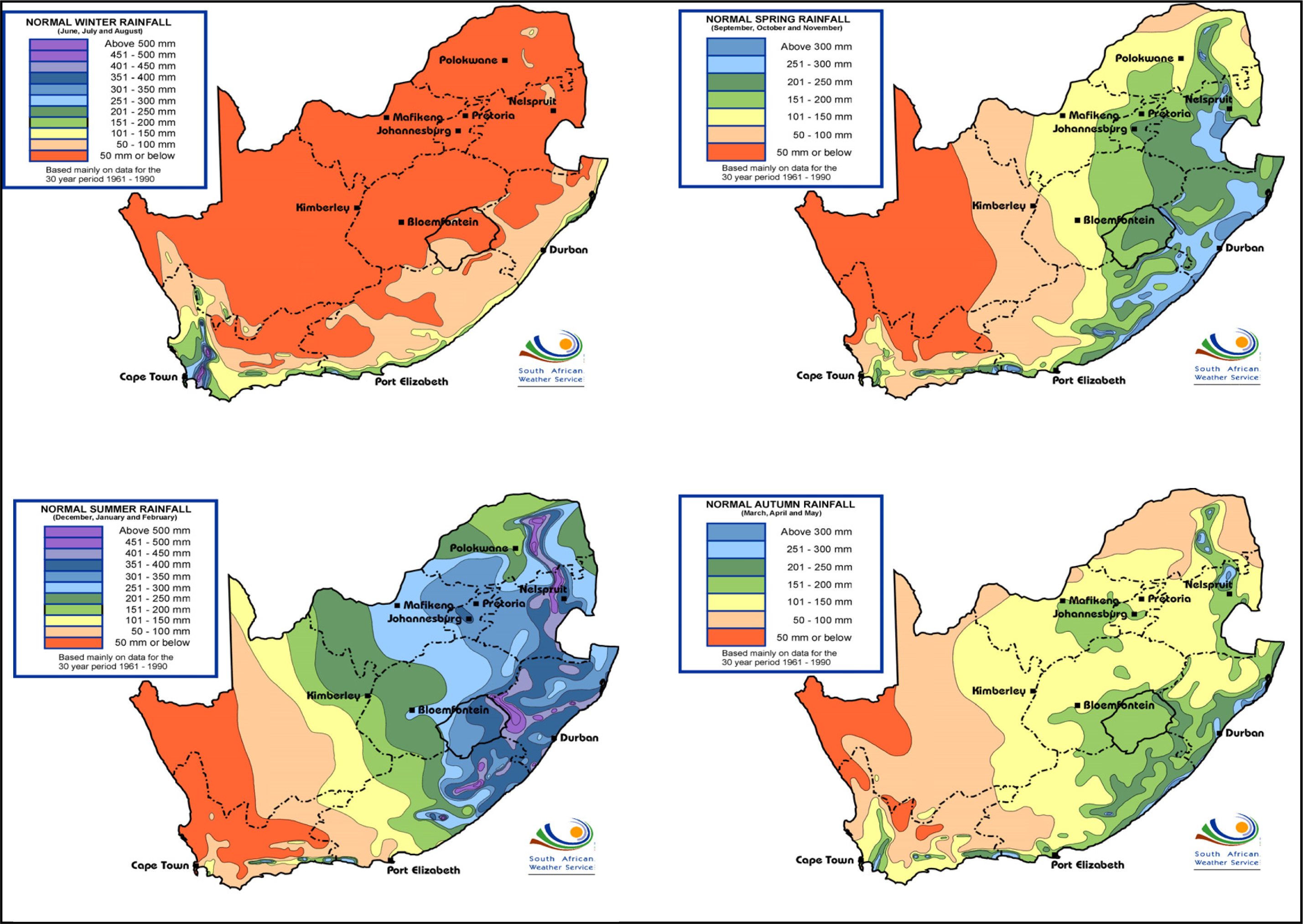



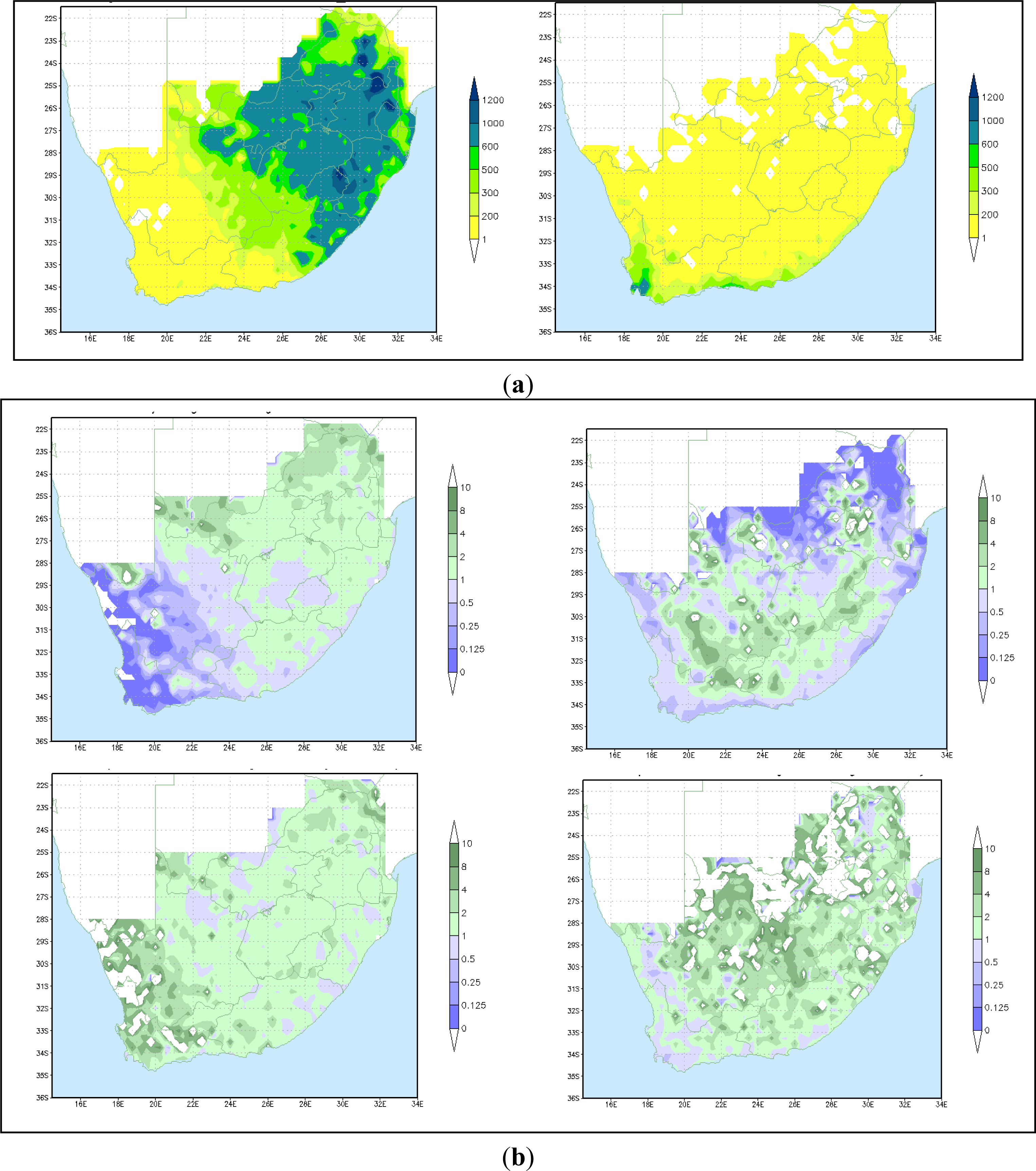



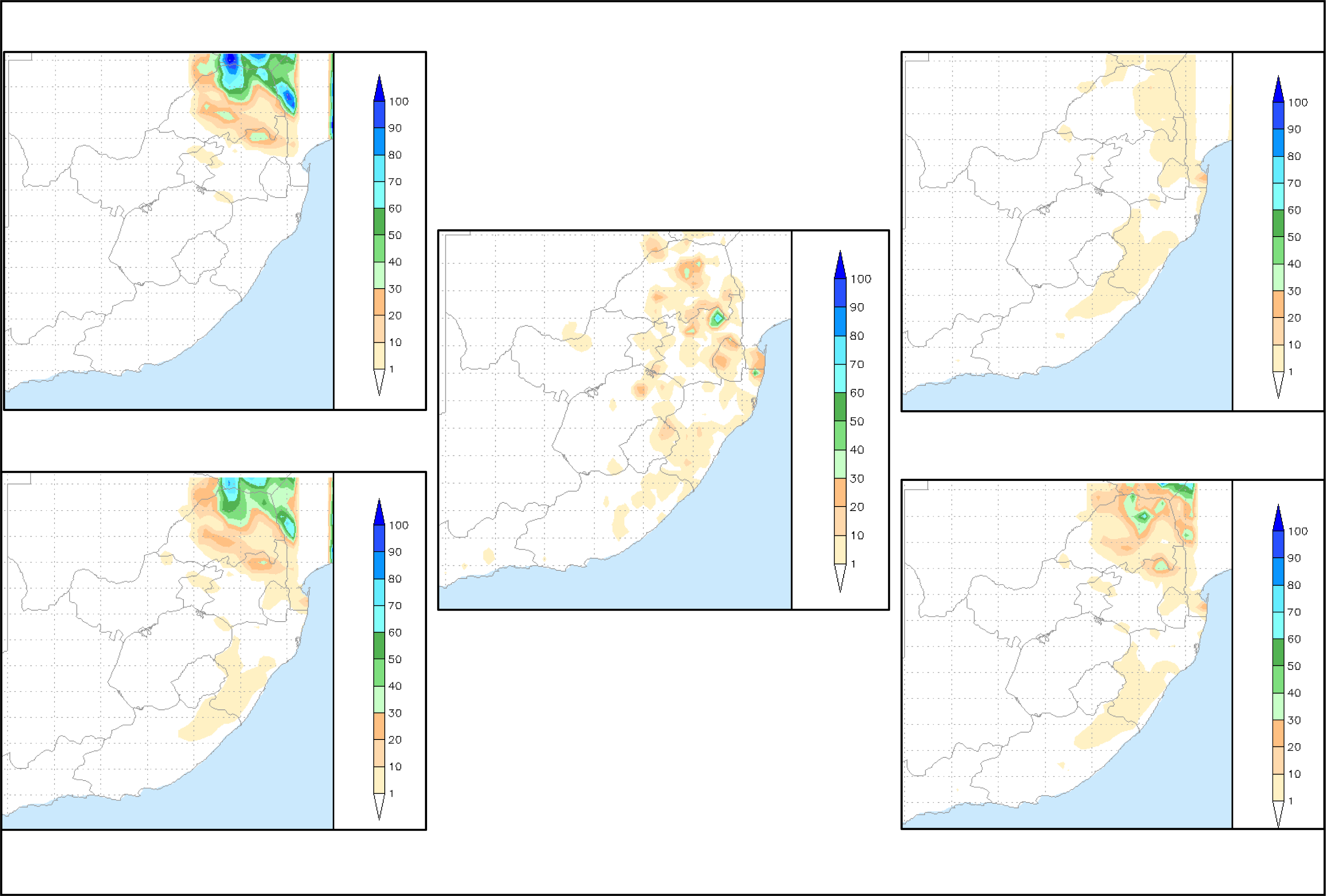
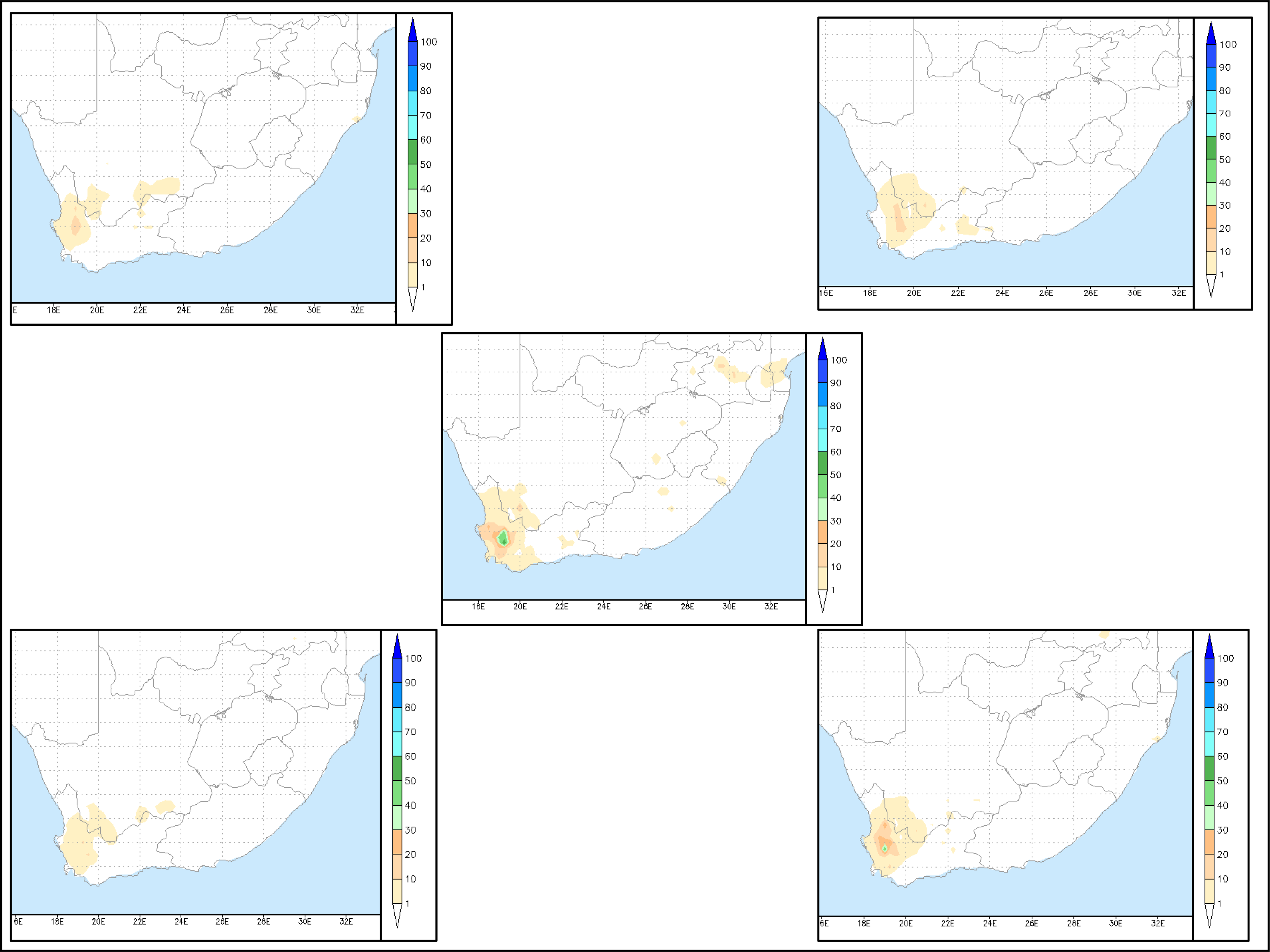

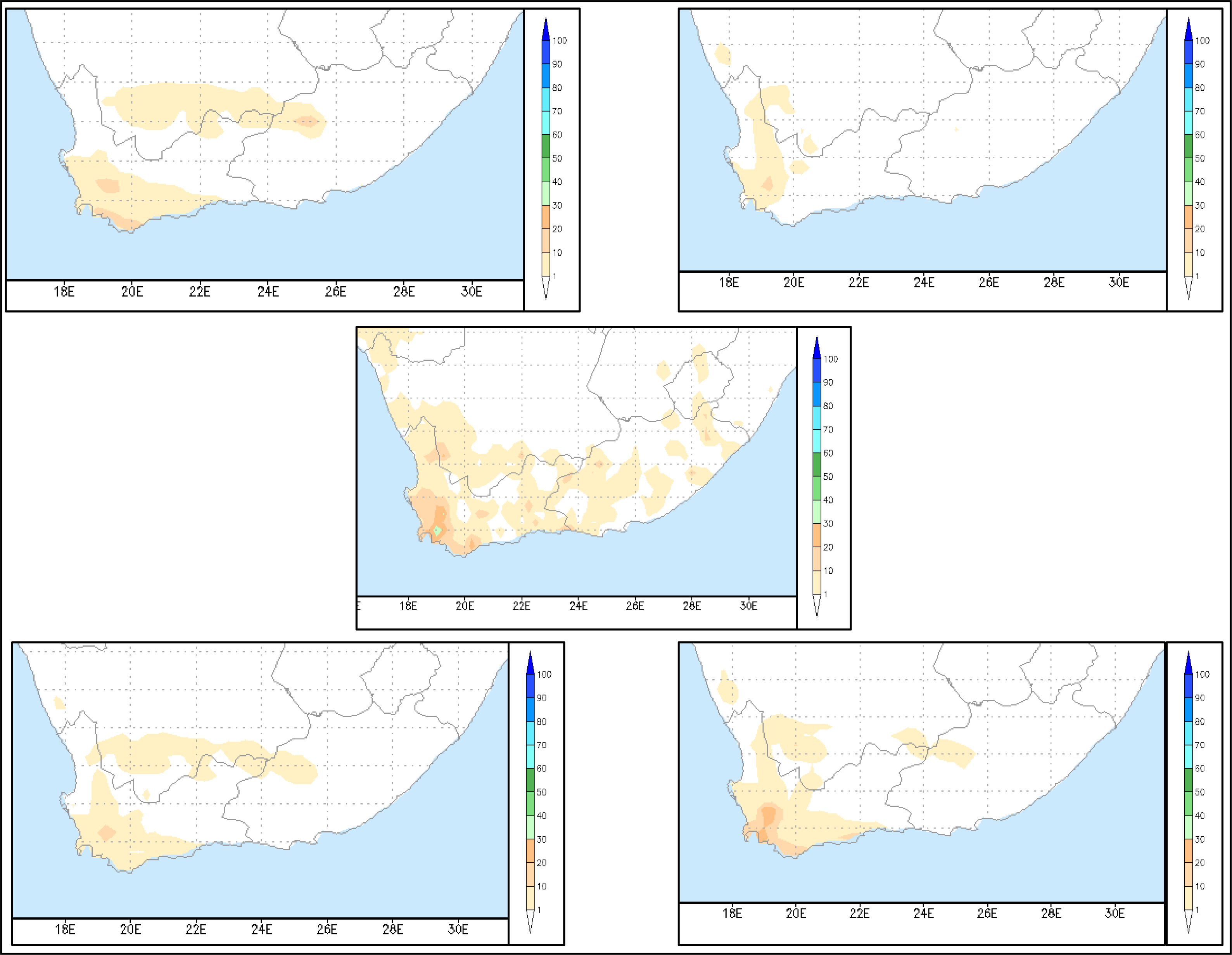

| Satellite algorithms combining microwave sensors and GEO input: | |
| 3B42RT | TRMM merged passive microwave data and microwave-calibrated IR data |
| CMORPH | Multiple microwave polar-orbiter satellites with spatial propagation using GEO IR data |
| CPCMMW | Multiple microwave polar-orbiter satellites with no IR data propagation or morphing |
| PERSIANN | Precipitation intensity and distribution initially trained using ground radar and microwave satellite observations for data assimilation. GEO IR data merged with assimilated data |
| GSMaP | Uses GEO Infrared data combined with Microwave Polar orbiter data |
| Satellite algorithm using only GEO input: | |
| Hydroestimator | Uses GEO IR data combined with NWP fields. |
| New Comb Has a Better HSS than Old Comb | New Comb Has a HSS the Same as Old Comb | New Comb Has a Better HSS than Uncorrected HE | |
|---|---|---|---|
| 1 mm threshold | 67% | 13% | 93% |
| 10 mm threshold | 54% | 25% | 51% |
| 20 mm threshold | 48% | 41% | 53% |
© 2013 by the authors; licensee MDPI, Basel, Switzerland This article is an open access article distributed under the terms and conditions of the Creative Commons Attribution license ( http://creativecommons.org/licenses/by/3.0/).
Share and Cite
De Coning, E. Optimizing Satellite-Based Precipitation Estimation for Nowcasting of Rainfall and Flash Flood Events over the South African Domain. Remote Sens. 2013, 5, 5702-5724. https://doi.org/10.3390/rs5115702
De Coning E. Optimizing Satellite-Based Precipitation Estimation for Nowcasting of Rainfall and Flash Flood Events over the South African Domain. Remote Sensing. 2013; 5(11):5702-5724. https://doi.org/10.3390/rs5115702
Chicago/Turabian StyleDe Coning, Estelle. 2013. "Optimizing Satellite-Based Precipitation Estimation for Nowcasting of Rainfall and Flash Flood Events over the South African Domain" Remote Sensing 5, no. 11: 5702-5724. https://doi.org/10.3390/rs5115702





